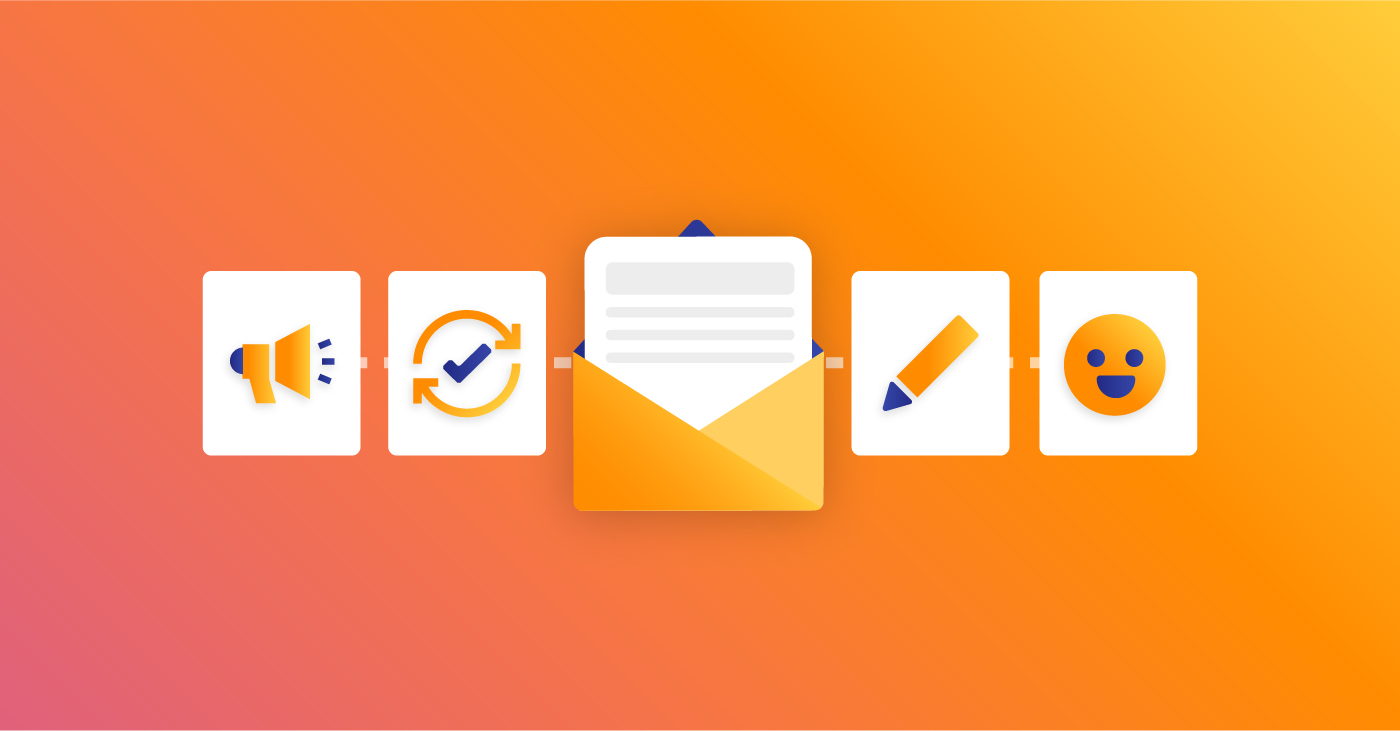Email Marketing Marketing Automation
Using AI For Email Personalization: A Complete Guide
March 9, 2022 3 min read

With everything going digital, the number of emails sent and received globally per day is estimated to be around 333.2 billion and may increase to over 376.4 billion by 2025.
But, are these emails just for casual communication among friends? Absolutely not! They’re also one of the best ways to make sales online. The return on investment from emails is massive. For every $1 spent, you can expect a return of $36.
But you can’t expect these kinds of results with batch-and-blast emails. These days, the most effective emails are those that are personalized.
What Is Email Personalization?
In simple terms, email personalization means using subscriber data to send more personalized (or targeted) content. These emails make readers feel more connected with the sender, which tends to supercharge open rates, click-through rates, and conversions.
You’ve likely been served a personalized email before. From those emails that address you by name – “Hey, John!” – to those that remind you about an item from an abandoned shopping cart on an eCommerce site, email personalization helps brands stand out.
For example, here are a few common ways that brands personalize their emails:
- Age
- Gender
- Position in the customer journey (prospect, new customer, die-hard fan, etc.)
- City or geographic region
- Favorite type of content to read
- By purchase history
Cookie Cutting, Privacy Protection, and Personalization
Although personalization has become crucial to email marketing success, collecting subscriber data is increasingly difficult. The data you need for personalization is typically extracted by cookies pulled from user behavior on your website. But, browsers like Firefox and Safari have cut down third-party cookies to protect user data. Even Google has announced eliminating cookies from its browser by 2023.
Brands have realized that personalization is essential for long-term customer retention. But ignoring customer privacy protection could hurt business as well. With customers’ increasing demand for relevant and personalized experiences, how do you meet them in the middle?
To meet the need for personalization without sacrificing privacy, businesses are changing their data collection methods to rely less on third-party cookies and more on first-party data. Automation software and tools use advanced engineering and machine learning to extract raw data from various sources. AI can then transform the raw data into a form that can be analyzed and worked into your email campaigns.
Automation speeds up data collection and reduces human error without using any cookies, which is a win-win for you and your customer.
What AI Can Do With Data
The future of email marketing is real-time behavioral-based personalization.
You now have the data extracted by your automation tools. The next step is to use this data meaningfully to personalize your emails. If you have a small subscriber list, you might already personalize individual emails by sending them manually. But what if you have hundreds or thousands of customers?
Personalizing each email would be nearly impossible, and this is where AI comes into play. AI can analyze customer behavior and optimize your email campaigns for success with the right data.
For instance, if a person is more likely to open his inbox in the evening, AI can make use of this data by only sending emails at the time when they’re most likely to check it.
AI also sends offers to people that are most relevant to them. If a person never spends over $100, you can market similar products under $100 to encourage them to spend more.
AI can also detect and reward people who have been your customers for a specific length of time, enhancing brand loyalty and retention.
When provided with the right data, AI can go far beyond first name personalization! It can provide tailor-made content to your customers and give them a sense of individual treatment.
Wrapping up
Emails that provide value increase both conversion and customer retention rates. Personalization is the key to extracting all the benefits of email marketing, and AI makes personalization a piece of cake. If you haven’t yet incorporated AI in your email marketing strategy, now’s the time!



